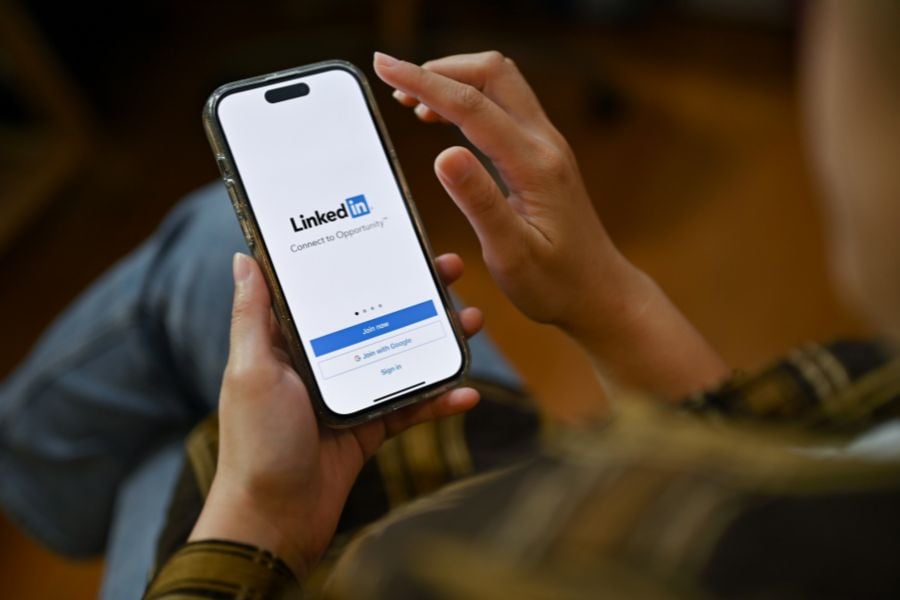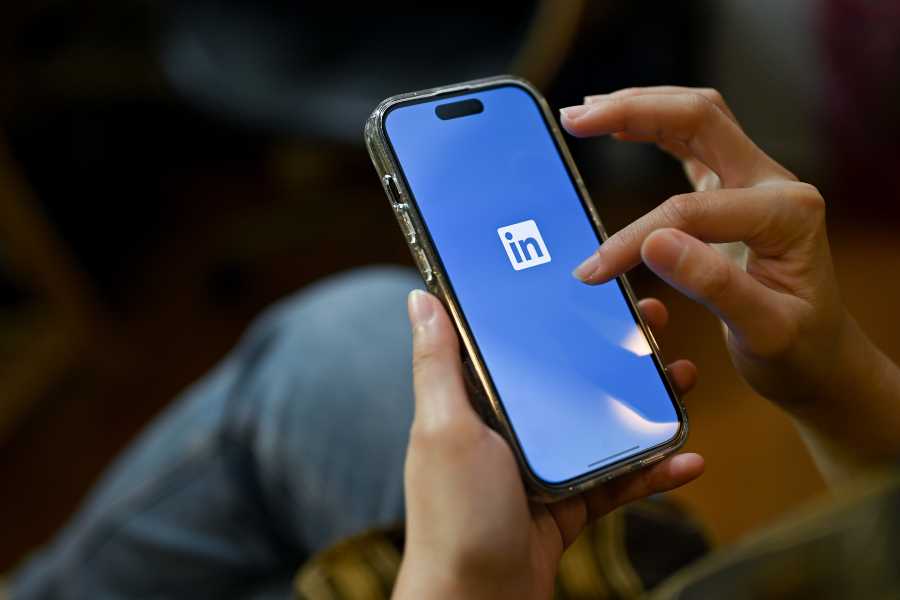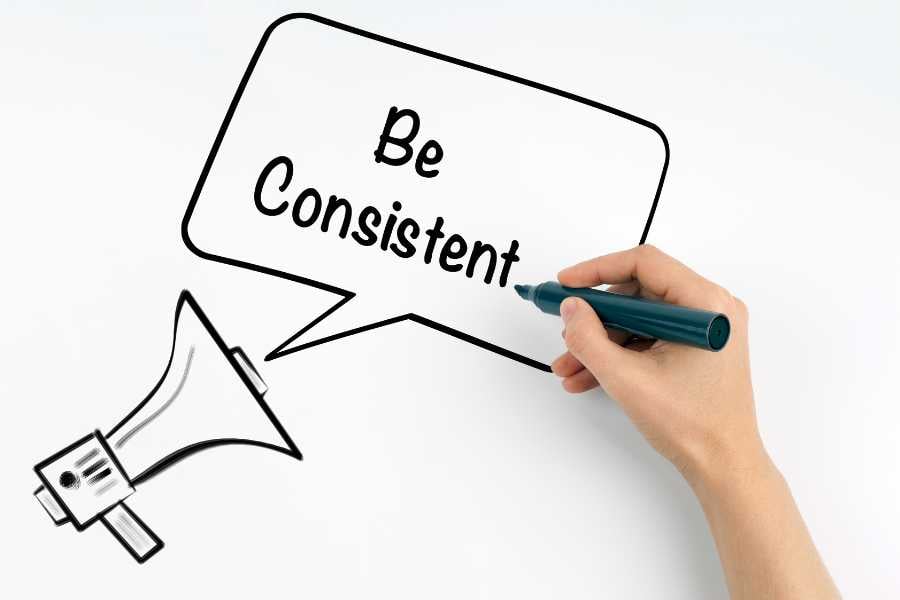So you’re wondering, “When is the best time to post on LinkedIn?”
Every creator, from budding entrepreneurs to seasoned executives, wants to ensure their LinkedIn content gets to the maximum eyeballs on this social media platform.
After all, why put in the effort if your post is just going to get lost in the noise?
So it’s perfectly natural to wonder if there is a specific hour or day that could skyrocket your LinkedIn success.
The reality is, there are certain windows that have proven more effective than others.
And in this guide, we’ll show you what they are and how to use them to get maximum engagement.
Let’s begin.

Why Timing Matters on LinkedIn
LinkedIn isn’t just a platform to upload your CV and forget about it.
It’s a dynamic social network bustling with professionals, thought leaders, job seekers, and companies eager to showcase their brand. In fact, around one-third of US adults use LinkedIn.
Here’s the kicker though: merely crafting a well-worded LinkedIn post isn’t enough. You’ve got to time it right, and here’s why.
LinkedIn, like most platforms, uses an algorithm to determine which posts appear on someone’s feed.
And beyond the undeniable need for quality content, the LinkedIn algorithm weighs engagement — likes, shares, comments, and even click-through rates.
But did you know that the first few hours after posting can make or break your content’s fate?
If you post something during peak business hours, there’s a higher likelihood of people liking, sharing, or commenting on your content.
And this initial engagement tells the LinkedIn algorithm — “This is something valuable!” And voilà, your content gets promoted to more feeds.
By choosing the best time to post on LinkedIn, you’re ensuring your LinkedIn content remains relevant and visible for longer.
So it pays to consider not just what, but when you post your content on LinkedIn.
Factors to Consider When Choosing a Posting Strategy

To capture your audience’s attention, you’ll want to consider specific factors before deciding on the optimal posting time. For example…
Your Target Audience
Understanding your target audience is crucial for guiding your content to the right eyes, at the right time.
For one, your target audience’s time zone matters.
Posting without considering this might mean your post gets buried under a deluge of social media posts by the time your target audience logs in.
So, you’ll want to use LinkedIn analytics to see where most of your audience is based.
If you notice a significant portion is from a different time zone than you, adjust your posting time accordingly.
Also, consider your target audience’s daily habits.
Contrary to popular belief, not everyone operates on the standard 9-to-5 schedule.
Freelancers, night-shift workers, or professionals in certain industries might have different active hours on LinkedIn.
Ultimately, by syncing your post content with your audience’s business hours, you’re making it easier for them to engage with, share, or even act on your content.
Purpose of Your Post
Next, understanding the purpose of your post is the key to ensuring your message resonates with the right folks at the right time.
For instance: If you’re posting industry updates or news, these posts often do well during weekdays, particularly in the mid-morning when professionals are gearing up for their day and seeking relevant updates.
It’s a way to keep them in the loop, and they appreciate content that adds value without beating around the bush.
Or what if you’re positioning yourself as a thought leader?
This requires content that sparks discussions. This kind of content is well-suited for mid-week, preferably Tuesday to Thursday, when the professional mindset is at its peak, and users are more inclined to engage in meaningful discourse.
And what about general news and updates? These updates need precise timing.
For instance, product launches or service upgrades benefit from mid-week postings when the buzz of the workweek ensures maximum visibility.
On the other hand, tips or tutorials about your product might find a keen audience during early afternoons, a subtle breather in a professional’s day.
In short, understand your audience, the purpose of your post, and ensure it aligns with the platform’s rhythm.
This way, you’ll boost visibility and ensure it strikes a chord with the intended audience.
Best Time to Post on LinkedIn By the Day

The optimal time to post on LinkedIn isn’t static; it varies with each day.
- Mondays see professionals catching up, so early morning posts can catch their fresh attention.
- Tuesdays to Thursdays are peak engagement days, with late mornings being the sweet spot for in-depth content.
- Fridays usually mean winding down, making early morning the last window of high engagement.
- Weekends are more relaxed, so personal narratives and lighter content could be your go-to, best posted in the late morning to early afternoon.
Observing these nuances can amplify your reach, ensuring your content resonates when your audience is most receptive.
Weekdays or Weekends?
Navigating LinkedIn’s bustling timeline depends on your specific situation. But as a general rule, keep in mind:
Weekdays are usually more active, aligning with the standard 9-to-5 rhythm. During the weekdays, professionals hop on for updates, networking, and industry news.
However, not every industry buzzes on the same schedule.
Tech and corporate sectors are weekday warriors, but industries like tourism or entertainment might have unconventional peaks.
Also, a prime posting time in New York might be bedtime in Tokyo.
So, while weekdays are generally recommended, it’s crucial to tailor your posting strategy to your industry and audience’s unique habits and geographical locations.
Morning, Midday, or Evening?
Choosing between morning, midday, or evening on LinkedIn is like timing your entry onto a bustling dance floor.
Post between 8 am to 9 am, and you’ll catch professionals browsing as they gear up for their day. Sharing a compelling article or a motivational quote can set the tone for their day.
The 12 pm to 1 pm slot is golden for more casual, engaging content as users scroll during lunch breaks. Thought-provoking polls or industry news can spark conversations.
And then there’s the 5 pm to 6 pm window: as the business day winds down, a LinkedIn user may be looking for insightful wrap-ups or prepping for tomorrow.
So aside from considering which day to post, remember to also tailor your content to these daily rhythms for maximum engagement.
Day by Day Breakdown
Now, let’s take a practical look at a sample strategy with recommended posting times based on days of the week:
- Monday: 9 am to 10 am — Start the week with momentum; share industry updates or goals.
- Tuesday: 11 am to 12 pm — It’s peak productivity time; sharing tips or how-tos can resonate.
- Wednesday: 1 pm to 2 pm — Midweek insights or thought leadership pieces can stir discussions.
- Thursday: 2 pm to 3 pm — Share success stories or throwbacks to maintain LinkedIn engagement.
- Friday: 9 am to 10 am — Light-hearted content or weekend reads catch users winding down.
- Saturday: 10 am to 11 am — Personal narratives or long-reads cater to relaxed weekend browsers.
- Sunday: 4 pm to 5 pm — Reflective posts or prep content for the upcoming week can gain traction.
Timing matters. Align your content with these optimal slots to better engage your audience.
Is There an Overall Best Time to Post on LinkedIn?

We’ve all wondered if there’s that one magical moment when our content will shine the brightest amidst the sea of LinkedIn updates.
But here’s the truth: there isn’t an agreed-upon consensus.
Yes, we have data. As Hubspot reports:
“According to our 2022 survey of 1000+ marketers, the best times to post on social media – across all industries and platforms – are 6 PM to 9 PM and 12 PM to 3 PM. The best day to post is Friday.”
But LinkedIn is a platform bustling with diverse professionals, spanning multiple industries and time zones.
And a content strategy that works wonders for a tech mogul in Silicon Valley might not have the same traction for an artist in Paris or an educator in Tokyo.
So while it’s tempting to think there’s a one-size-fits-all answer, it’s essential to remember that the best time depends on your audience’s habits, the nature of your post, and your desired outcomes.
Take the data as a starting guide, but always be ready to pivot and adapt.
5 Tips to Help Find Your Best Time to Post on LinkedIn

Now you understand the best time to post on LinkedIn, here are five tried-and-tested strategies to optimize your posting schedule:
1. LinkedIn Analytics & 3rd Party Tools
Diving into data can seem daunting, but it’s your map to figuring out when your audience is most receptive.
So, study historical LinkedIn engagement patterns before you plot the course ahead.
Ask yourself…
Which of your posts have enjoyed the most engagement, and when were they posted?
Spotting these patterns can give you a hint about when your audience is most active.
Next, consider LinkedIn’s analytical tool to help you understand who’s viewing your posts, what content they’re interacting with, and crucially, when they’re online.
Finally, branch out with 3rd party analytics tools to fine-tune your LinkedIn strategy. Here are a few to consider: Hootsuite, DrumUp, Buffer, Sprout Social, and Inlytics.
The key to success? Continuously test, iterate, and refine based on the insights these tools offer.
2. A/B Testing
A/B testing is a simple yet effective way to find your best post timings.
The beauty of A/B testing lies in its simplicity. With just two variations and a keen eye on the results, you’ll be well-equipped to tailor your LinkedIn strategy.
Post the same content at two different times, then analyze likes, shares, and comments. What does the data indicate?
Based on your results, tailor your strategy accordingly. But remember that one test isn’t conclusive. Continuously repeat the A/B testing process, perhaps altering content types or days, to make sure you’re always on track.
3. Study Your Top-Performing Posts

By delving deep into your highest-performing LinkedIn posts, you not only understand when your audience is most active, but you also gain a glimpse into the type of content that resonates most.
Examine your best LinkedIn posts to discern peak activity times and preferred content types.
Then analyze the days and times of these posts for patterns. Evaluate their common elements to refine both your content and posting schedule. Leveraging insights from past successes reduces guesswork, ensuring your content resonates with and reaches your audience.
4. Conduct a Competitive Analysis
Understanding your competitors’ moves can be as essential as understanding your own.
Examine their content: what’s driving engagement? Identify gaps in their topics that your audience might value. Use these insights to enhance your posting decisions.
But while their strategies offer guidance, remember your brand’s unique voice and value.
Use competitive analysis as a tool, but always couple it with your insights and authenticity.
5. Consistency is Key

While determining the optimal posting times is crucial, it’s only half the battle won. The other, often underestimated half?
Consistency.
Optimal posting times are vital, but consistency truly drives engagement.
Regular posting trains your audience to anticipate and interact with your content, fostering loyalty. LinkedIn’s algorithm rewards such consistency, boosting your content’s visibility.
Focus on quality, not just frequency: ensure each LinkedIn post adds value. Re-share standout content or curate relevant industry pieces when in doubt.
But as the platform and audience dynamics shift, be ready to adjust.
The Best Time to Post Depends on Your Audience
While general guidelines provide a starting point, the best time to post on LinkedIn hinges largely on your specific audience.
Factors such as geographic location, industry rhythms, and target demographics play pivotal roles.
Dive deep into your LinkedIn metrics: which posts performed best and when? This data will give you tailored insights.
Continuously adjust your posting times based on these findings. Don’t just follow the crowd; let your audience’s behavior guide your LinkedIn strategy.
When you align your posting strategy with their routines and preferences, you can spark genuine connections and level up your LinkedIn marketing strategies.
And isn’t that what LinkedIn is truly all about?



